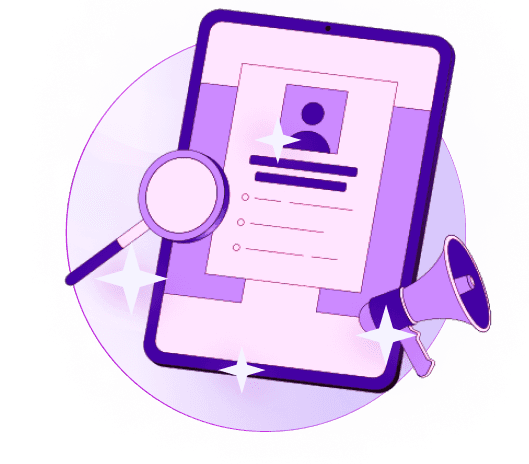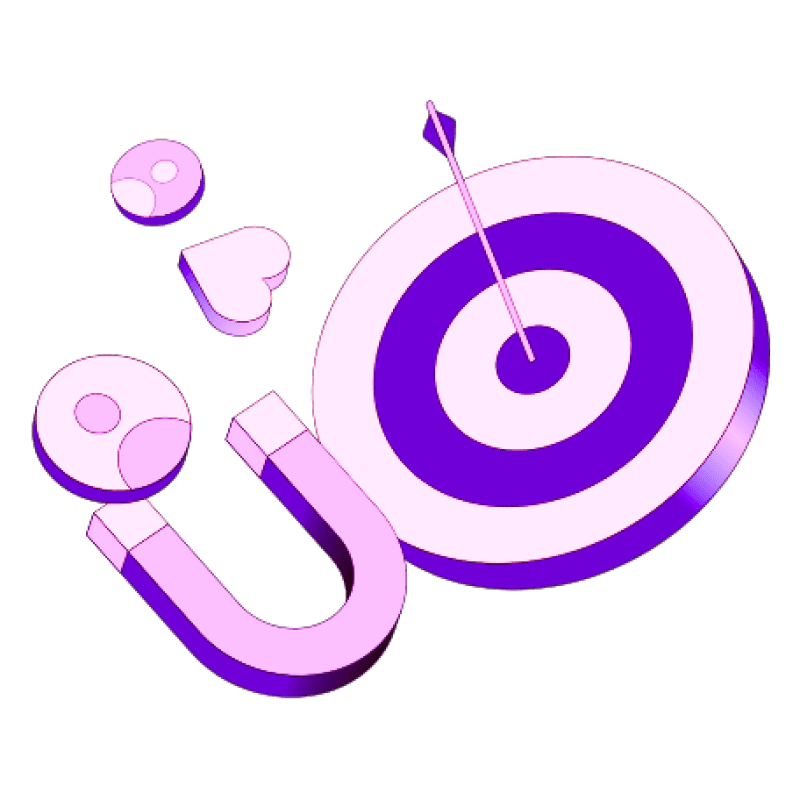Blogs
Articles

6 Sales Development Automation Strategies to Boost Your Pipeline
You might be surprised to learn that effective sales development automation can automate over 30% of your sales activities.
Companies with well-maintained sales pipelines grow their revenue 10% faster year over year. Many sales teams face challenges with manual processes, missed follow-ups, and inconsistent pipeline management. This causes them to lose opportunities that could convert leads more consistently and improve their sales pipeline management.
This piece will show you six proven sales development automation strategies to boost your pipeline, convert more leads, and scale your sales operations. Let's take a closer look!
1. Understand What Sales Development Automation Is
Sales development automation combines technology with sales strategy and changes how teams turn prospects into customers. Let's understand this powerful approach before exploring complex automation strategies.
What is sales automation and how it works
Technology handles repetitive sales tasks through automation, which saves time and reduces errors in the sales process. Automation doesn't replace your sales team - it frees them from paperwork so they can build relationships and close deals.
Traditional sales automation works in two main ways. Your system captures and updates customer data without manual input, like pulling deal information from emails into account records. The workflow automation handles tasks that were once manual, such as sending quotes for approval.
AI has transformed modern sales automation. Data management tells the story of sales automation. Simple automation updates information when calls happen, emails arrive, or deals move forward. AI analyzes pipeline data and suggests the best actions to progress deals. Generative AI can create emails, call summaries, and sales reports from existing data.
Difference between sales automation and sales enablement
Sales automation and sales enablement play different but complementary roles in your sales ecosystem. Sales enablement provides tools, resources, and content that help sales teams understand and connect with prospects. This gives your team everything they need to sell better.
Sales automation optimizes tasks like lead management and follow-ups. Sales enablement manages broader initiatives by providing resources at the right moment. Picture automation as the engine and enablement as the roadmap for resource deployment.
Automation helps enablement by making processes efficient. Your representatives can focus on building relationships and finding growth opportunities. This relationship works both ways - good enablement makes automation more effective because your team knows how to use automated tools strategically.
McKinsey's research reveals a gap: sales has huge automation potential, yet only one in four companies has automated at least one sales process. Companies that close this gap gain competitive edges through better efficiency and effectiveness.
Why automation matters for pipeline growth
Sales automation boosts your pipeline growth in several ways. Your sales team gets back valuable time when repetitive tasks become automated. McKinsey reports that teams can automate about a third of sales and operations tasks using current technology. This makes sales ripe for automation implementation.
Companies that adopt sales automation early see clear benefits:
More time with customers
Better customer satisfaction scores
Sales uplift potential of up to 10 percent
Automation changes pipeline management at every stage. Your tools can handle email sequences, track interactions, schedule meetings, and maintain sales pipelines. Nothing slips through as your business grows because everything stays organized.
Automated lead qualification shows how automation strengthens pipeline health. The system qualifies prospects based on their website visits, social media engagement, and email responses. Qualified leads go to the right sales team members quickly, which improves follow-up and conversion rates.
Growing companies need automation more than ever. Manual management becomes harder as sales volumes increase. Sales automation software grows with you, handling more leads and customers while keeping processes efficient.
2. Automate Lead Prospecting and Outreach
Sales pipelines start with lead prospecting and outreach. Your team's efficiency and results will improve by a lot if you automate these original stages. Studies show companies that use automated lead generation convert 77% more leads than those using manual methods. Here's how you can make your prospecting and outreach efforts work better with automation.
Use email sequencing tools for outreach
Modern sales teams need email sequencing tools to grow their outreach while keeping messages personal. These tools send pre-planned email series to prospects automatically. This helps maintain steady communication and lets your team spend time on valuable conversations.
Good email sequences need multiple touchpoints that go out at the right times. These automated sequences create natural conversations that guide prospects through your sales pipeline. Your team can watch how prospects interact and step in at the right moment for meaningful discussions.
Email sequencing does more than just save time. Companies using email automation see a 320% higher return on investment than those using manual methods. This huge difference comes from several benefits:
Consistent follow-up: Sequences make sure every prospect gets attention through automatic follow-up emails based on their actions
Time optimization: Sales teams save hours they would spend writing and scheduling emails manually
Scalability: Teams can reach out to more prospects without working harder
Automate lead assignment with CRM rules
Quick lead routing to the right sales representative matters once leads enter your pipeline. Research shows that automated lead assignment gives companies faster response times and higher conversion rates. This automation ensures prospects get attention right away.
CRM-based lead assignment rules share leads using preset criteria. This ensures fair workload sharing while helping convert more leads. These rules work with different factors:
Geographic territory or region
Industry or company type
Lead score or qualification level
Product interest or specific needs
Sales representative capacity or availability
"Round-robin" distribution remains one of the most popular ways to assign leads. This method shares leads equally among team members in order. Another option, capacity-based assignment, looks at each representative's current work and availability. This prevents giving too much work to top performers while keeping response times quick.
Track engagement with sales development automation tools
Data about prospect engagement helps you make your sales development better. Sales engagement tracking tools gather interaction data from all channels automatically. This lets you make smart decisions about managing your pipeline.
Important things to track with automation include email opens, click-throughs, response times, and meeting bookings. These numbers show which outreach strategies appeal to prospects and which need work. Without doubt, watching these patterns helps find the best opportunities in your pipeline.
Automated engagement tracking brings several key benefits:
Immediate analytics let your team focus on prospects showing the most interest. Representatives can prioritize prospects who open emails often or visit pricing pages.
The engagement data helps improve your outreach strategies. You can make your approach better by seeing which messages, subject lines, and calls-to-action get more responses.
Better pipeline forecasting becomes possible with complete tracking. Looking at engagement patterns helps predict which opportunities will convert, so you can plan resources better.
3. Streamline Lead Qualification with Automation
Your sales team could close more deals instead of manually qualifying leads. Yes, it is true that companies using lead qualification automation report higher conversion rates and faster sales processes. Here's how you can simplify this key pipeline stage.
Set up lead scoring models
Lead scoring reshapes your qualification process by giving numerical values to leads based on their chances of becoming customers. This organized way helps you give priority to prospects who are most likely to convert. Your sales team can focus their efforts where they matter most.
Start by defining your ideal customer profile and find out which attributes show sales readiness. Good lead scoring models review two main categories:
Demographic/Firmographic Fit: Job titles, company size, industry, revenue, and geographic location
Behavioral Signals: Website visits, email engagement, content downloads, webinar attendance, and pricing page views
Segment leads based on behavior and demographics
Segmentation splits your leads into different groups so you can follow up with targeted strategies. You can create personalized approaches for different lead segments by looking at both demographic traits and behavior patterns.
Behavioral segmentation works well because it looks at what leads do—not just who they are. This method studies how leads know about, feel about, use, and respond to your product or service. The main goal is to understand what different customer groups need and talk to them in the right way.
These segmentation approaches work well:
Purchase Behavior: Put leads in groups based on their buying decisions
Customer Journey Stage: Split by where leads are in their buying process
Usage Patterns: Group leads as heavy, medium, or light users
Benefits Sought: Sort by what leads want from your solution
Don't create too many segments when setting up your automation platform - it could spread your resources thin. Focus on behaviors that affect your bottom line directly, like purchases, engagement patterns, and how people use your service.
Trigger workflows based on qualification criteria
Your automated workflows can take the right follow-up actions without manual work once you've scored and segmented your leads. These triggered sequences reach out to qualified leads at the right time while keeping messages personal.
Workflow automation uses "if-then" logic: your system takes preset actions when a lead meets certain criteria. When a lead reaches your qualification threshold, your automation platform can:
Give the lead to the right sales representative
Send personal follow-up emails
Add relevant tags for more segmentation
Set up alerts for valuable opportunities
Move the lead forward in your sales pipeline
Qualification workflows shine because they create different paths based on how leads respond. A prospect showing a company size over 50 employees might go to your enterprise sales team with a "VIP" tag. Smaller company prospects could go to your SMB team with different follow-up plans.
4. Automate Meeting Scheduling and Follow-Ups
Sales teams waste precious time with endless back-and-forth emails to schedule meetings. This creates a bottleneck that makes prospects lose interest. 61% of companies now use scheduling tools to fix this problem. Your sales team can win back hours of selling time each week by automating meeting coordination and follow-ups. This helps keep prospects involved.
Use calendar integrations for demo booking
Calendar integrations have changed how prospects book meetings with your sales team. Calendar scheduling links let prospects see open slots and book right away. No more email ping-pong to find times that work.
The best calendar tools connect multiple calendars at once. This prevents double bookings and shows real availability. Calendly, for example, can link up to six calendars to handle scheduling based on when people are free. Both your team and prospects will find this smooth and easy.
You'll get better results by adding scheduling links right in your outreach emails. Prospects can book time with sales reps easily, which speeds up your sales cycle and increases booking rates. These tools also work with Zoom, Microsoft Teams, or Google Meet. Meeting links show up in calendar invites automatically.
Round-robin scheduling works great for team selling. Meeting requests go to available team members based on rules you set up. Everyone gets a fair share of meetings while keeping response times quick.
Send automated reminders and confirmations
Missed meetings throw off your sales pipeline and waste selling time. That's why automated reminders are crucial for keeping things running smoothly. Research shows that automated reminder systems cut down no-shows by a lot.
Here's what works for reminder automation:
Email and text reminders 24-48 hours before meetings
Confirmation requests that prospects must acknowledge
Quick reminders an hour before the scheduled time
Meeting agenda and prep materials in reminder messages
The timing of your reminders makes a big difference. Most platforms let you pick when reminders go out—usually between one hour and three days before meetings. You can adjust this to match your sales process and what your customers prefer.
Custom reminder content helps build your brand relationship. Messages that match your brand's voice create a consistent experience and build trust. You can use standard templates or create completely custom messages on most platforms.
Follow up with personalized content automatically
The time right after a sales meeting is perfect to keep momentum going. Automated follow-ups make sure communication stays consistent while customizing messages based on how the meeting went.
Modern scheduling platforms work with CRMs and email systems to start follow-up sequences automatically. These systems send thank-you messages, share requested resources, or book next steps without manual work. Everything gets logged in your CRM, so you can see exactly what's happening with your pipeline.
Your follow-up approach should match meeting outcomes. Different prospect reactions need different follow-up plans. AI tools can now look at meeting content and suggest the right follow-up materials based on what was discussed.
Automated follow-ups save time and get better responses. Companies that use automated follow-ups see more conversions because they answer prospect questions quickly. This keeps your solution fresh in prospects' minds when they're making decisions.
Advanced platforms use behavior-based triggers to adjust follow-up timing and content based on how prospects interact. If a prospect looks at your proposal several times after meeting, the system might send more information or suggest another chat.
5. Speed Up Proposal and Quote Generation
Manual creation of professional proposals and quotes can slow your sales cycle down. Companies that use proposal automation can create quotes in 17 minutes or less. This stage can make or break deals - they either move quickly toward closure or get stuck indefinitely. Let's learn how automation can boost your sales pipeline.
Use templates to create quotes faster
Template libraries are the foundations for quick quote generation. Your sales team can create professional quotes quickly by building a collection of pre-approved templates with standard pricing, product descriptions, and terms. These templates keep your brand consistent while letting you customize as needed.
Quote templates offer several key advantages:
Your team saves valuable selling time by avoiding repetitive data entry
All proposals stay accurate with consistent pricing and messaging
Your organization's policies and standards remain compliant
Sales teams can respond to opportunities faster
Make internal approvals and client delivery automatic
Approval bottlenecks often create big delays in selling. Manual proposal approvals lead to slow decisions, mixed-up priorities, and resource problems. The process becomes much smoother with automated approval workflows.
Good approval automation should have:
Dynamic routing based on criteria: Proposals route automatically based on cost, complexity, business value, and risk. Simple projects take faster paths, while bigger ones go to senior leaders.
Notification systems: Reviewers get automatic alerts about pending actions, missed deadlines, or urgent items. This keeps approvals moving and decisions happen on time.
Conditional logic: Rules like "approved proposals move forward; rejected ones return with feedback" make things clear. Teams can revise and resubmit proposals easily.
Many teams use platforms like Microsoft Power Automate to create approval processes that handle documents across SharePoint, Dynamics 365, and Salesforce.
See how prospects view and interact with proposals
Proposal tracking software shows you live how prospects look at your documents. Your follow-up becomes strategic instead of guesswork.
Good tracking shows you:
The exact time prospects open your proposal
Their favorite sections
Time spent on specific content
Who else they share it with
Your team can follow up at the perfect time with relevant details. To name just one example, if tracking shows a prospect keeps going back to your pricing section, your sales rep can address cost concerns proactively.
The system becomes even better when proposal tracking connects to your CRM. Every team member sees deal status without manual updates. Advanced platforms can study engagement patterns to help teams focus on the best deals and improve their approach.
6. Monitor and Optimize Your Pipeline with Automation
The final piece of the puzzle comes after implementing various automation strategies - monitoring and optimizing your pipeline performance. Companies that forecast sales accurately show 10% more likelihood to grow their revenue year over year. Your team can make analytical decisions and act early when deals show warning signs through continuous monitoring.
Use dashboards to track sales pipeline metrics
Sales dashboards give you a detailed view of applicable business data that helps you monitor key metrics in your organization. Visual representations let you track daily sales numbers, pipeline health, and team performance quickly. Modern dashboards display:
Pipeline value and growth rate
Conversion rates at each stage
Sales velocity metrics
Target versus actual achievements
The Sales Performance Dashboard tracks your individual performance among team metrics. The Sales Manager Summary dashboard gives an explanation of your team's overall pipeline and financial data. These visualizations help you forecast sales accurately by spotting trends and patterns.
Automate alerts for stalled deals
Deals die with time. Your team needs reminders to follow up when a deal stage stays static too long, which automated alerts can handle. Deal Alerts use AI to notify you about opportunity changes, highlighting successful and unsuccessful aspects throughout the sales process.
These intelligent alerts do more than send simple triggers like email opens or page visits—they interpret patterns showing genuine buyer intent. Your system can automatically create follow-up tasks to maintain momentum when a deal stays in the same stage for 14 days. This approach guides your representatives with AI Signals that alert them to the next best step and boost their chances to win.
Review performance with sales pipeline reports
Automated reporting systems deliver timely, accurate insights into performance metrics efficiently. These tools use AI and machine learning to spot trends, helping sales managers make quick analytical decisions.
A great Sales Pipeline report has an overview, key metrics, and recommendations for next steps. You'll see your progress toward goals by measuring changes in metrics like lead volume, conversion rates, and win rates.
Your sales development automation can reach new heights. Visit Persana.ai to find how our platform helps you monitor and optimize your sales pipeline better.
Conclusion
Sales development automation is a game-changer for organizations that want to optimize their pipeline management and increase conversion rates. This piece explores six powerful strategies that can change your sales processes and deliver better results.
Without doubt, automation streamlines processes by handling repetitive tasks. Your sales team can focus on building relationships instead of manual data entry, email scheduling, or proposal creation. They can spend more time on meaningful conversations that move deals forward.
Each automation strategy works together to create a continuous sales ecosystem. These connected processes from prospecting to qualification, meeting scheduling to proposal generation, and pipeline monitoring ensure no chance slips away.
On top of that, data shows companies using these automation strategies see major improvements. Teams that make use of the right automation tools can achieve higher conversion rates, faster sales cycles, and increased revenue growth.
Note that sales automation doesn't replace your sales team – it boosts their capabilities. The most successful organizations find the perfect balance between technological efficiency and human connection. Sales representatives provide the vital personal touch while automation takes care of background tasks.
Key Takeaways
Sales development automation can transform your pipeline efficiency by handling repetitive tasks while freeing your team to focus on high-value relationship building and deal closing activities.
• Automate lead prospecting with email sequences and CRM rules - Companies using automated lead generation convert 77% more leads than manual methods, with email automation delivering 320% higher ROI.
• Implement lead scoring and qualification workflows - Set up automated scoring models based on demographics and behavior to prioritize high-intent prospects and trigger personalized follow-up sequences.
• Streamline meeting scheduling with calendar integrations - Use automated booking links and reminder systems to eliminate back-and-forth emails and reduce no-shows by up to 61%.
• Speed up proposal generation with templates and approval workflows - Automated quote creation reduces proposal time to 17 minutes or less while maintaining brand consistency and pricing accuracy.
• Monitor pipeline health with automated dashboards and alerts - Track key metrics in real-time and set up stalled deal notifications to prevent opportunities from falling through the cracks.
• Start small and scale gradually - Begin with your biggest friction point, then expand automation across your sales process to achieve the 10-15% efficiency gains and 5-10% revenue increases that early adopters report.

Create Your Free Persana Account Today
Join 5000+ GTM leaders who are using Persana for their outbound needs.
How Persana increases your sales results
One of the most effective ways to ensure sales cycle consistency is by using AI-driven automation. A solution like Persana, and its AI SDR - Nia, helps you streamline significant parts of your sales process, including prospecting, outreach personalization, and follow-up.



